
The original house, which burned down in 1915, was co-founded in 1889 by Charles Zidler and Joseph Oller, who also owned the Paris Olympia. Close to Montmartre in the Paris district of Pigalle on Boulevard de Clichy in the 18th arrondissement, it is marked by the red windmill on its roof. The closest métro station is Blanche.
Moulin Rouge is best known as the birthplace of the modern form of the can-can dance. Originally introduced as a seductive dance by the courtesans who operated from the site, the can-can dance revue evolved into a form of entertainment of its own and led to the introduction of cabarets across Europe. Today, the Moulin Rouge is a tourist attraction, offering musical dance entertainment for visitors from around the world. The club's decor still contains much of the romance of fin de siècle France.
The Belle Époque was a period of peace and optimism marked by industrial progress, and a particularly rich cultural exuberance was about at the opening of the Moulin Rouge. The Expositions Universelles of 1889 and 1900 are symbols of this period. The Eiffel Tower was also constructed in 1889, epitomising the spirit of progress along with the culturally transgressive cabaret.[2] Japonism, an artistic movement inspired by the Orient, with Henri de Toulouse-Lautrec as its most brilliant disciple, was also at its height. Montmartre, which, at the heart of an increasingly vast and impersonal Paris, retained a bucolic village atmosphere; festivities and artists mixed, with pleasure and beauty as their values. On 6 October 1889, the Moulin Rouge opened in the Jardin de Paris, at the foot of the Montmartre hill. Its creator Joseph Oller and his Manager Charles Zidler were formidable businessmen who understood the public's tastes. The aim was to allow the very rich to come and 'slum it' in a fashionable district, Montmartre. The extravagant setting – the garden was adorned with a gigantic elephant – allowed people from all walks of life to mix. Workers, residents of the Place Blanche, artists, the middle classes, businessmen, elegant women, and foreigners passing through Paris rubbed shoulders. Nicknamed "The First Palace of Women" by Oller and Zidler, the cabaret quickly became a great success.
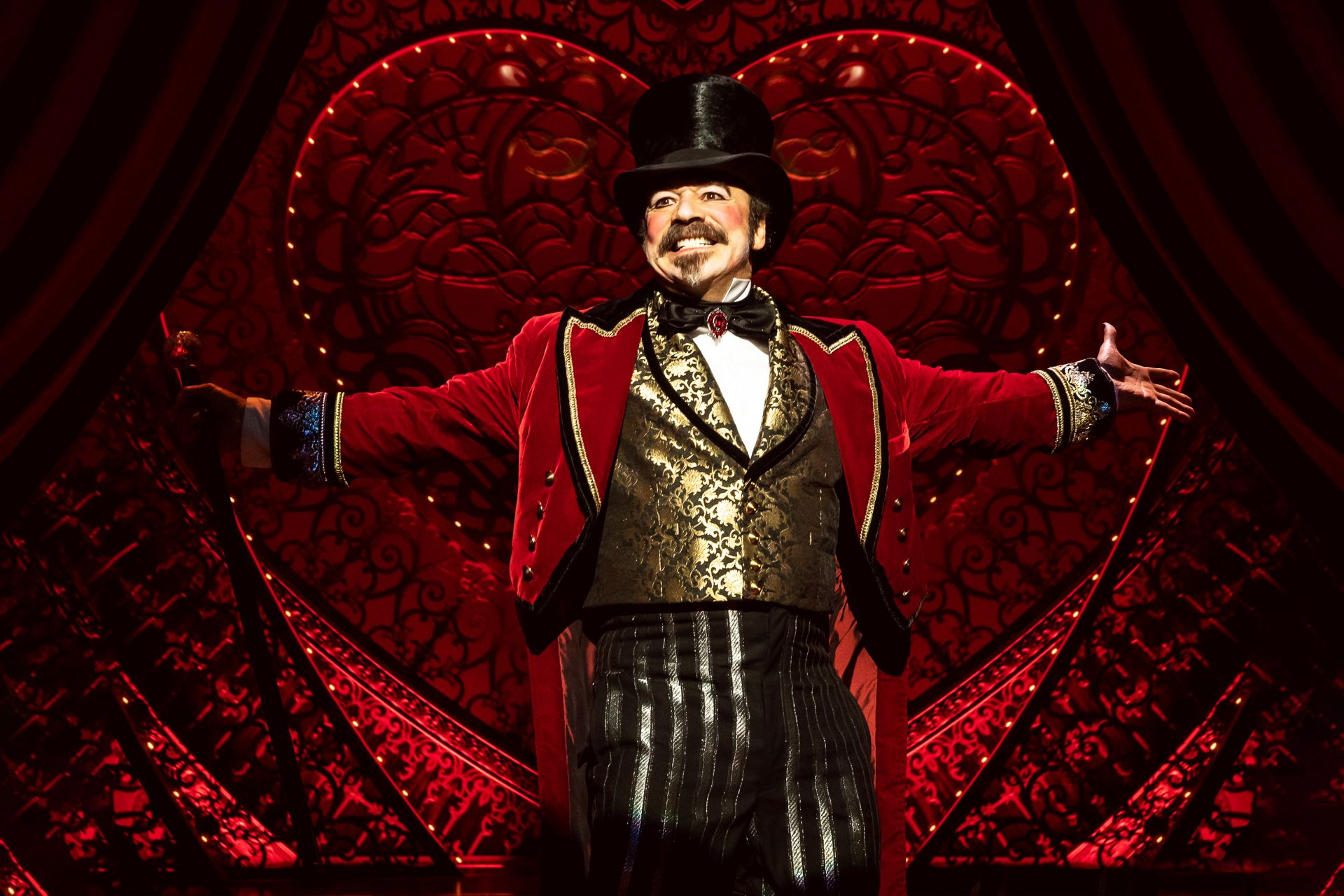







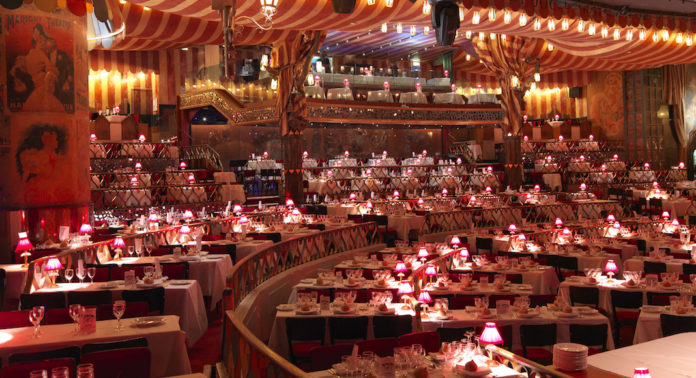


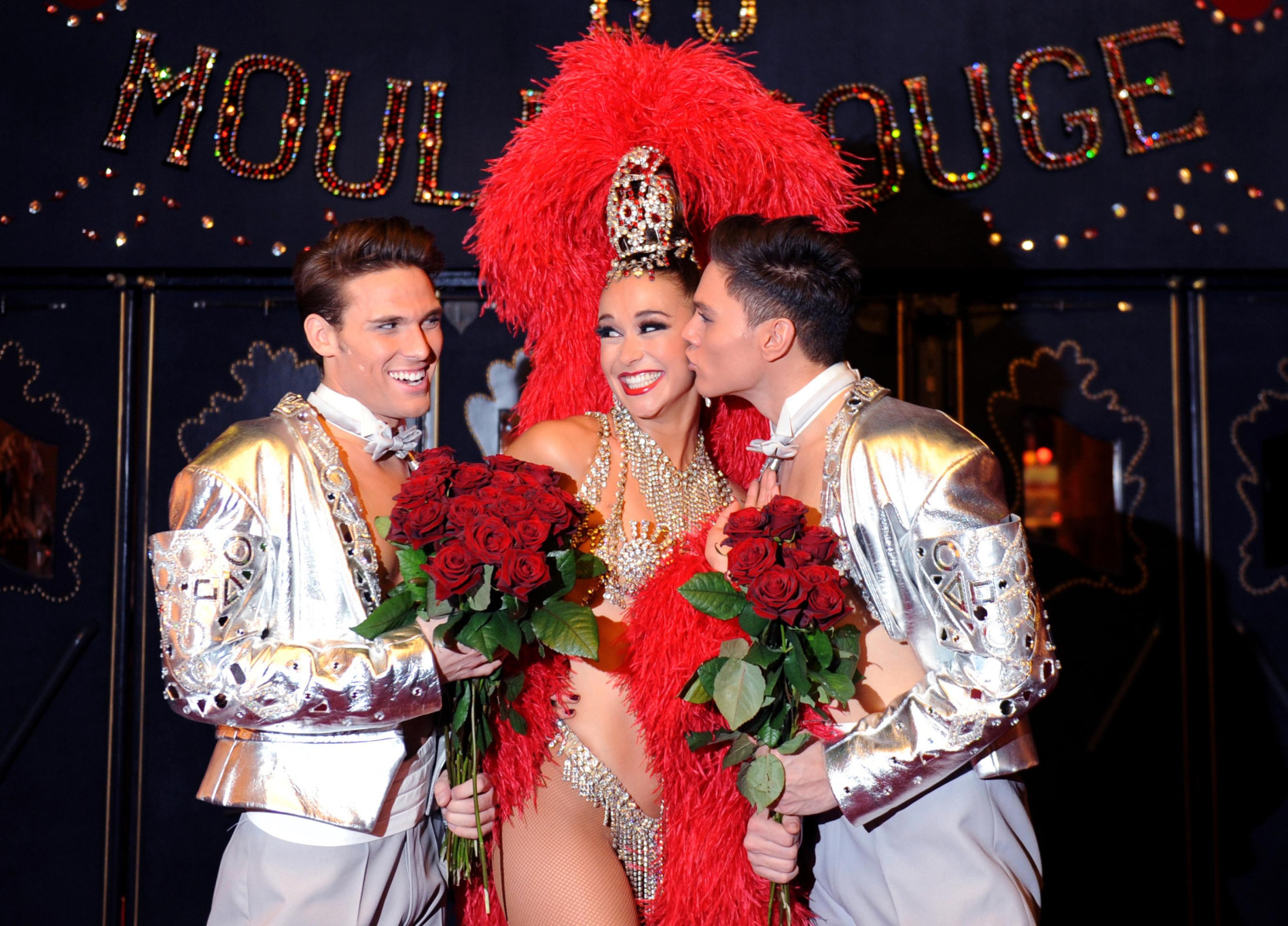
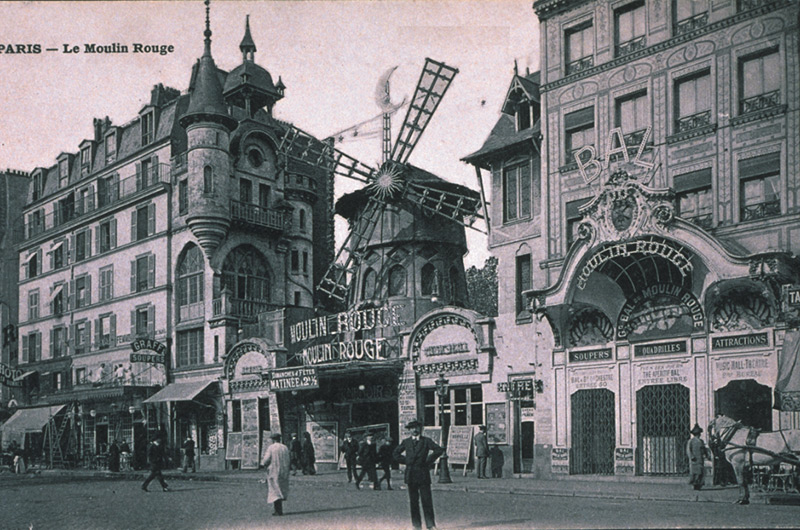
1900

The early years of the Moulin Rouge are marked by extravagant shows, inspired by the circus, and attractions that are still famous such as Pétomane. Concert-dances are organised every day at 10pm.
1886–1910: Footit and Chocolat, a comic act of a white, authoritarian clown and a black, long-suffering Auguste, are very popular and often appear on the Moulin Rouge poster.
19 April 1890: 1st review, "Circassiens et Circassiennes".
26 October 1890: His Royal Highness the Prince of Wales, the future Edward VII, who on a private visit to Paris, booked a table to see this quadrille whose reputation had already crossed the Channel. Recognising him, La Goulue, with her leg in the air and her head in her skirts, spontaneously called out "Hey, Wales, the champagne's on you!".
1891: La Goulue: Toulouse-Lautrec's first poster for the Moulin Rouge.
1893: The "Bal des Quat'z'Arts" caused a scandal with its procession of a nude Cleopatra surrounded by young naked women.
12 November 1897: The Moulin Rouge closed its doors for the first time for the funeral of its manager and cofounder, Charles Zidler. Yvette Guilbert paid him homage saying, "You have the knack of creating popular pleasure, in the finest sense of the word, of entertaining crowds with subtlety, according to the status of those to be entertained".
1900: visitors from around the world, attracted by the Universal Exhibition, flock to the "Moulin Rouch". This gave Paris a reputation as a city of decadent pleasure. In many other countries imitation "Moulin Rouges" and "Montmartres" sprang up.

Toulouse-Lautrec and Mr Tremolada, Zidler's assistant and Moulin-Rouge manager, Paris, 1892.

Brooklyn Museum - At the Moulin Rouge, La Goulue and her Sister - 1892 - Henri de Toulouse-Lautrec

After World War I, Francis Salabert took charge of the Moulin Rouge. A businessman rather than a showman, he gave Jacques-Charles, the leading impresario of the time, the task of reinvigorating the cabaret. The Moulin Rouge took off again, thanks to stars such as Mistinguett, Jeanne Aubert, and Maurice Chevalier, and gave the first showing in Paris of American revues with the Hoffmann Girls.
Gesmar, aged 20, became set designer. His drawings and models will always be associated with the image of the Moulin Rouge.
Jacques-Charles and Mistinguett were the originators of:
1925 : la Revue Mistinguett
1926 : Ça c'est Paris
1928 : Paris qui tourne
At the Moulin Rouge, Mistinguett created many enduring songs, including "Valencia", "Ça c'est Paris", both by Jose Padilla, "Il m'a vue nue", "On m' suit", "La Java de Doudoune", the latter with Jean Gabin.


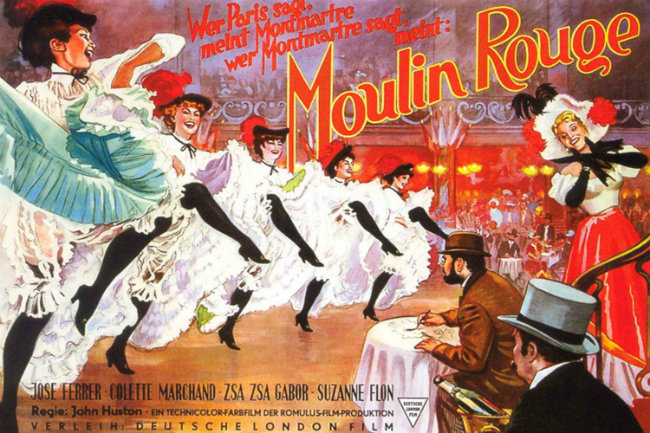
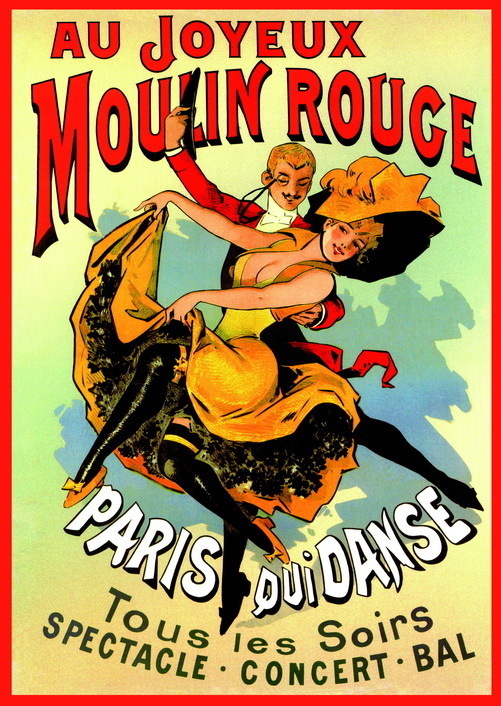
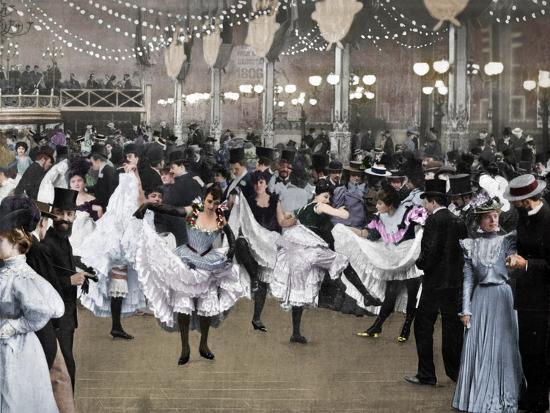
1900

more
